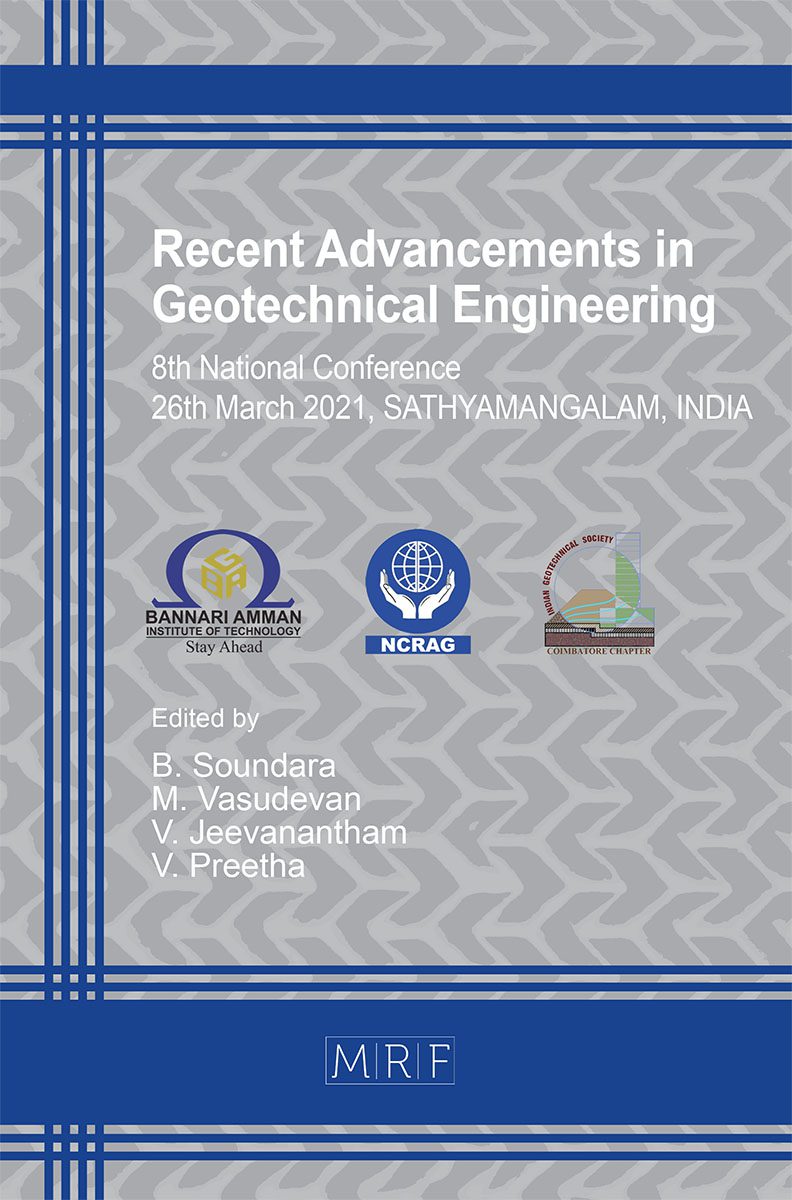Feasibility Study on the Utilization of Manufactured Sand as a Partial Replacement for River Sand
B. Vijaya, S. Senthil Selvan
download PDFAbstract. Continuous extraction of sand is having a huge impact on the natural river beds which has resulted in lowering of water table and a decrease in the amount of sediment supply. Despite the quantity of sand used in our day-to-day activities, our dependence on sand is significantly increasing. The use of manufactured sand as a fine aggregate in concrete draws the attention of many investigators and researchers. The present investigation includes the study of soundness and EDAX .The test results depicted that for M-sand substituted concrete the loss of weight, when subjected to alternate cycles of freezing and thawing when tested with magnesium and sodium sulphate solution was found to be less when compared with natural sand. The important observation is that the inclusion of manufactured sand in concrete reduces the pores present in concrete resulting in matrix densification and makes the concrete impermeable and substantially reduces the rate of oxygen diffusion and reduces the corrosion process as well. This paper also focuses on the effect of manufactured sand as a fine aggregate in the elastic and bond characteristics of concrete.
Keywords
River Sand, Manufactured Sand, Soundness Test, EDAX, Modulus of Elasticity, Pull Out Test
Published online 8/15/2021, 7 pages
Copyright © 2021 by the author(s)
Published under license by Materials Research Forum LLC., Millersville PA, USA
Citation: B. Vijaya, S. Senthil Selvan, Feasibility Study on the Utilization of Manufactured Sand as a Partial Replacement for River Sand, Materials Research Proceedings, Vol. 19, pp 215-221, 2021
DOI: https://doi.org/10.21741/9781644901618-27
The article was published as article 27 of the book Recent Advancements in Geotechnical Engineering
![]() Content from this work may be used under the terms of the Creative Commons Attribution 3.0 licence. Any further distribution of this work must maintain attribution to the author(s) and the title of the work, journal citation and DOI.
Content from this work may be used under the terms of the Creative Commons Attribution 3.0 licence. Any further distribution of this work must maintain attribution to the author(s) and the title of the work, journal citation and DOI.
References
[1] H.Donza,O. Cabrera, E.F. Irassar, High-strength concrete with different fine aggregate , Cement and Concrete Research 32 (11) (2002) 1755-1761. https://doi.org/10.1016/S0008-8846(02)00860-8
[2] P. Quiroga, D. Fowler, The effects of aggregates characteristics on the performance of Portland cement concrete, International center for aggregates research 104-1F .
[3] S.Jamkar, C.Rao, Index of aggregate particle shape and texture of coarse aggregate as a parameter for concrete mix proportioning, cement and concrete research 34 (11) (2004) 2021-2027. https://doi.org/10.1016/j.cemconres.2004.03.010
[4] M.Westerholm, Rheology of the mortar phase of concrete with crushed aggregate, Department of chemical engineering and Geosciences, Licentiate, vol.198, Lulea University of technology, Stockholm, 2006.
[5] F.I. Mel’nikov, calculation methods for determining compositions of refractory concretes, refractories and industrial ceramics 11 (1970) 591-595. https://doi.org/10.1007/BF01290553
[6] H.Jarvenpaa, Quality characteristics of fine aggregates and controlling their effects on concrete, department of materials science and rock engineering, Helsinki University of technology, Doctor of Thechnology, vol.243, 2001.
[7] M.F. Kalpan, Flexural and compressive strength of concrete as affected by the properties of a coarse aggegrates,American Concrete Institute 55 (1959) 1193 – 1208.
[8] JTG F 30-2003, Technical specification for construction of highway cement concrete pavements. Beijing; Ministry of transport of the People’s Republic of China: 2003.
[9] Ahn N, Experimental study on the guidelines for using higher contents of aggregate micro fines in Portland cement concrete . Ph.D.Thesis. University of Texas.
[10] IS: 383 (1970, Reaffirmed: 2002), Code of Practice: Specification for Coarse and Fine Aggregates from Natural Sources for Concrete, Bureau of Indian Standards, New Delhi.
[11] IS: 2770 (Part I)-1967 “Methods of testing bond in reinforced concrete,” BIS, New Delhi.
[12] IS:516-1959, Recommended guidelines for concrete mix, Bureau of Indian Standards,New Delhi.
[13] AS 1141.24, (1997) “Methods for sampling and testing aggregates-Aggregate soundness,” Evaluation by exposure to sodium sulfate solution.
[14] IS 12269 : 2013 Code of Practice: Ordinary Portland Cement, 53 Grade – Specification
[15] IS:10262-1982, Recommended guidelines for concrete mix, Bureau of IndianStandards, New Delhi.
[16] Vijaya. B and Senthil Selvan.S,Comparative Study on the Strength and Durability Properties of Concrete with Manufactured sand, Indian Journal of Science and Technology, (2015), 8(36),.1-7. https://doi.org/10.17485/ijst/2015/v8i36/88614
[17] Vijaya, B and Senthil Selvan. S.,Experimental Investigation on the strength and Durability properties of concrete using Manufactured sand,” International Journal of Applied Engineering Research , International Journal of Applied Engineering Research, (2015), 10 (68), 109-114.
[18] IS 456 (2000), – Code of Practice for Plain and Reinforced Concrete, Bureau of Indian Standards, New Delhi.































